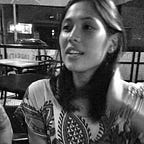A Guide for Crafting Interview Guides: Made for non-researchers
TL; DR
- List all of the topics you want to learn about in the interview.
- Ask why.
- Double-check your topics.
- Practice the questions.
- Iterate.
Some of the more interesting challenges as you grow in a field, is figuring out “How do you teach others to do what you do?”
Especially, when it’s something with no established online tutorial like — “insighting”, or “analysis”.
So, what I tend to do is I break down my process into a practical, scaleable, step-by-step flow.
There has been a lot of buzz around “UX”, and I’m happy that most people are finally getting that the “user” in “user experience” means getting to know your users. Technically, “user experience” “research”.
My own journey to learning research skills was straightforward: I was a market research practitioner. Started in 2005. So, I really needed to go through being educated about research and statistics processes for years — for work.
HOWEVER, with the growing popularity of “UX” and “usability” and “guerilla research”, a lot of people are being made to do research on their own — but can’t afford (in terms of time, or budget) to go through the entire rigor of a full “Conducting Research” course.
Besides, as much as I love the intricacies of conducting research (sampling, questionnaire creation, data processing) — I know it’s a niche job for a reason:
It’s not like everyone gets excited about the thought of talking to at least 15 people a day about their daily habits and preferences for 2 hours, then encoding them and charting them. (Which is why you have A Book Apart’s Just Enough Research.)
In fact, like the whole principle of “minimum viable product”, it’s better to do the research you need, rather than ending up not doing it well or at all because of getting daunted by the full-blown version.
Some of the most common questions for me, recently, have all been about creating an interview flow: Do I ask this first? How can I ask this? What kind of questions do I ask?
Crafting an Interview Flow
The operative word there is flow: Interviews are very engineered conversations, but conversations just the same.
There are existing best practices to how you structure them. And, when you eventually get the hang of it, I actually find it a lot of fun — optimizing how it flows to get the best possible answers (best to mean — “deepest”, most fleshed out answers, okay; not “the answers that I want to hear”.)
1. List all the topics* you want to learn about in the interview.
You heard me, list it all down.
*We’re doing this first because I’ve seen that it’s typically easier for people to think of interview topics first — before they dive into the deeper problems the interview should solve.
If you want to get geeky, there are more formal names for this action. In quantitative research, for example, the output of a survey’s open-ended questions would be called and organized into a “code frame”.
But you don’t need to call it anything, just get them all out on paper.
Excel or a spreadsheet is best, just so you can move them around easily.
Sample: Say you wanted to conduct a task analysis interview for a Digital Agency, because you wanted to create a product that makes team communication more efficient. What topics would you like to ask about?
2. Ask yourself “why”
For every topic you listed down, answer: “Why do you want to ask about that?”.
This helps you get to the Objectives “layer”.
Problem You’re Solving -> Research Objectives -> Research Topics -> Questions
This will help you weed out topics that might be unnecessary for your objective.
3. Go back to your questions. Check if they ask everything you need.
Once you’ve pinpointed the real objectives that you’re trying to answer, go back to your list.
Double-check if each of the questions matches your objectives (because you have to trim your questions as much as possible — the shorter, the better, for your respondents).
On the flip side, double-check if there’s something missing to get to your objectives.
4. Practice on a teammate.
Check if the flow feels right.
This is actually a critical step. Don’t think that this is skippable.
You’ll often discover that how you feel a conversation flows, is different from how it plays out in real life. So, at the very least, try it out with a colleague and see what type of answers you get.
Are there better ways to phrase things?
5. Iterate.
Of course, once you’ve tried out the flow — revise the interview flow if there’s something that needs work.
This is especially necessary for interviews with over 10 questions, but it’ll also help you whittle down whatever interview you’re planning.
Hope this helps in your next guerilla research undertaking. Tell me how it works out.
For further reading
The best practices link from earlier in the post, from Harvard’s Department of Sociology:
Originally published at www.angelaobias.com on August 2, 2015.
⏩ 👫 If you found this helpful, please share it to the people it can help, too.
As I mention in weeknotes I write, I’m a fan of designing in the open.
If you want to follow the things I’m learning along the way, as a researcher, strategist and teacher, follow me on Medium or subscribe to our yet-to-be-regular newsletter.
